Thousands of nondescript bone fragments have turned out to be a genetic treasure trove, that has cast light on the diversity of animals in New Zealand before humans arrived about 750 years ago.
The fragments have also highlighted the impact of early Polynesians and added detail to our understanding of their diet.
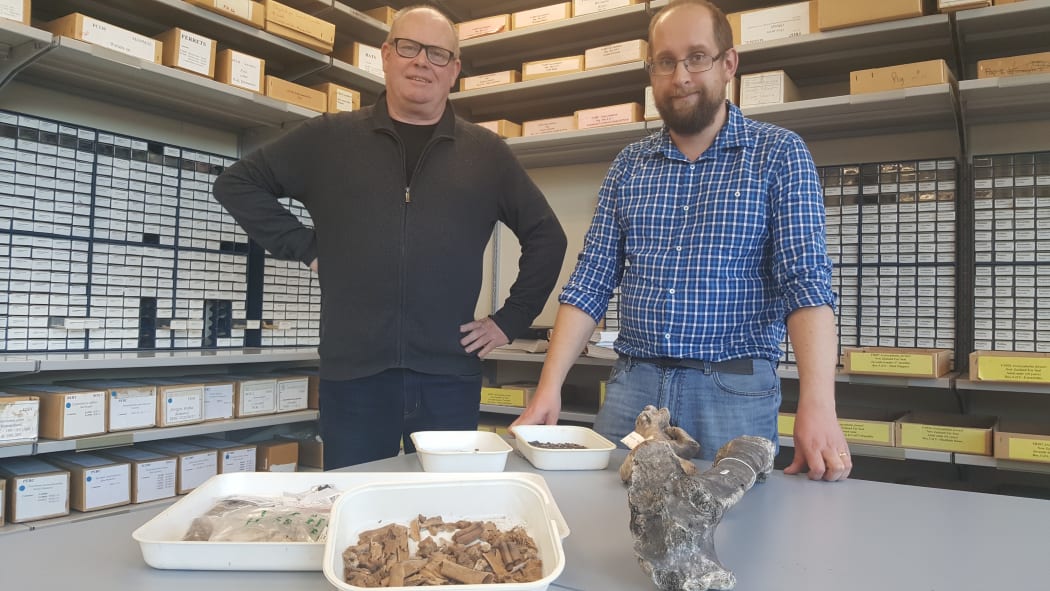
Richard Walter and Nic Rawlence with bone fragments and moa bones in the Advanced Laboratory at the University of Otago. Photo: RNZ / Alison Ballance
Subscribe to Our Changing World for free on Apple Podcasts, Spotify, Stitcher, RadioPublic or wherever you listen to your podcasts
Middens are rubbish heaps that provide valuable information about the animals that Māori used to eat.
For decades, archaeologists have identified species from middens by matching bones, for example, against a reference collection of known bones. But there were always bags of fragments left over that were simply too broken to identify.
“About 90 percent of the material is fragmented, smashed up and unidentifiable,” says archaeologist Professor Richard Walter, head of the Department of Anthropology and Archaeology at the University of Otago and Director of Southern Pacific Archaeological Research.
But even though no one had an immediate use for the bits and pieces, they were carefully stored.
“We don’t throw anything away,” laughs Richard. “We wash, we store, we label and we keep everything – just in case something can happen in the future.”
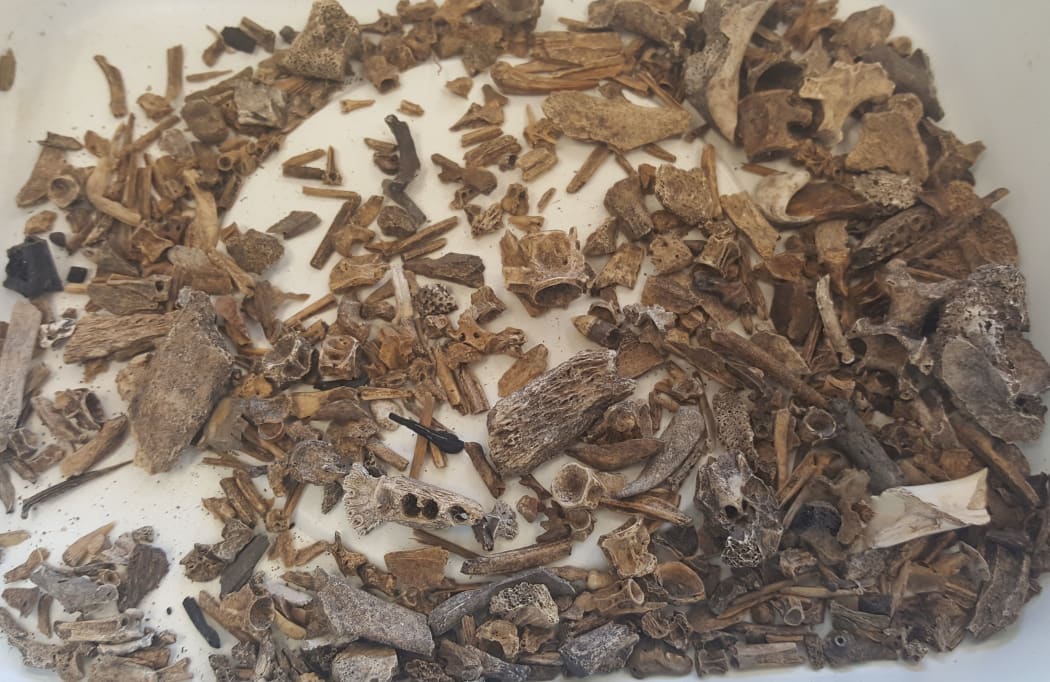
The DNA in this 'frag bag' of bone fragments can identify unexpected species in early Maori diet. Photo: RNZ / Alison Ballance
And that something has come along. It is a combination of the techniques of ancient DNA and environmental DNA, and it is revealing fine details about New Zealand animal populations before humans came along, and is also highlighting how quickly the first humans to settle the country had an impact on them.
Dr Nic Rawlence co-directs the Otago Palaeogenetics Laboratory at the University of Otago. In the last few years, Nic and colleagues have used ancient DNA to rewrite our understanding of the evolution and extinction of marine species, working on species such as black swans, shags, sea lions and penguins.
“I reconstruct what New Zealand used to be like when Polynesians arrived,” says Nic, “and look at the impacts they had, how their behaviours and diet changed over time, and then take that information for smart conservation or smart restoration of … what we’ve got left.”
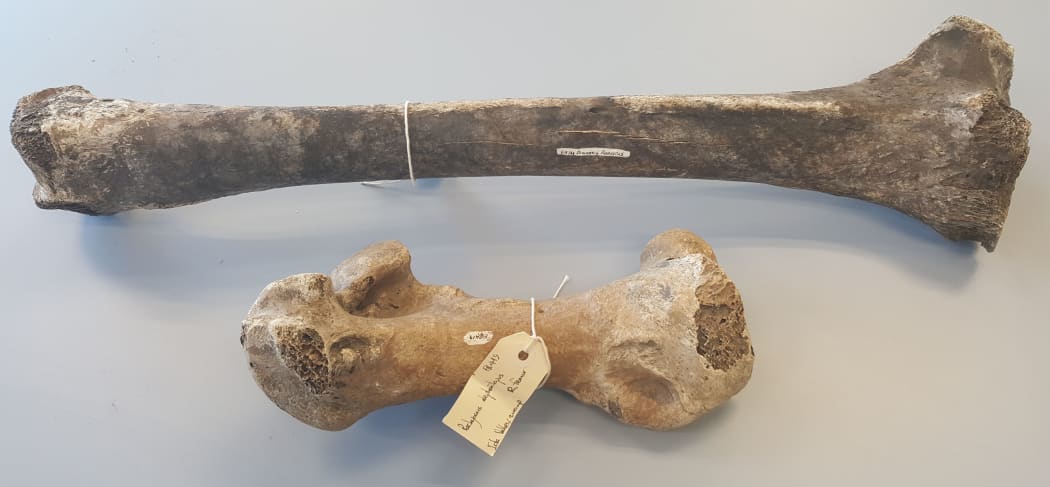
Large leg bones from moa are easy to identify. Photo: RNZ / Alison Ballance
Nic says that over the years traditional archaeology has built up a good picture of what early Polynesian settlers in New Zealand ate. But he likens it to a “paint-by-number version of the Sistine Chapel ceiling that’s not coloured in.”
“We’ve got the broad picture,” he says, “but we’re lacking all the details.”
Adding the genetic detail
When Nic looks at Richard’s bags of bone fragments, what he sees is a treasure chest of potential DNA signatures.
He says what he and his colleagues did was take 300 or so bits of bone at a time, grind them up to a fine bone powder, extract the DNA to create a “DNA soup”, and then use environmental DNA technology to “photocopy up a genetic barcode that will identify all of the animals in these fragments.”
These genetic barcodes were then compared against libraries of known barcodes and assigned to a species.
In some cases the researchers had to create new barcodes to add to the reference library. Nic says they sampled DNA from the extinct Haast’s eagle and Markham’s frogs, for example, using known bones from natural history collections housed in various institutions around the country.
All of these genetic signatures and identifications have allowed Nic and Richard to begin to colour in their outline picture of the Sistine Chapel.
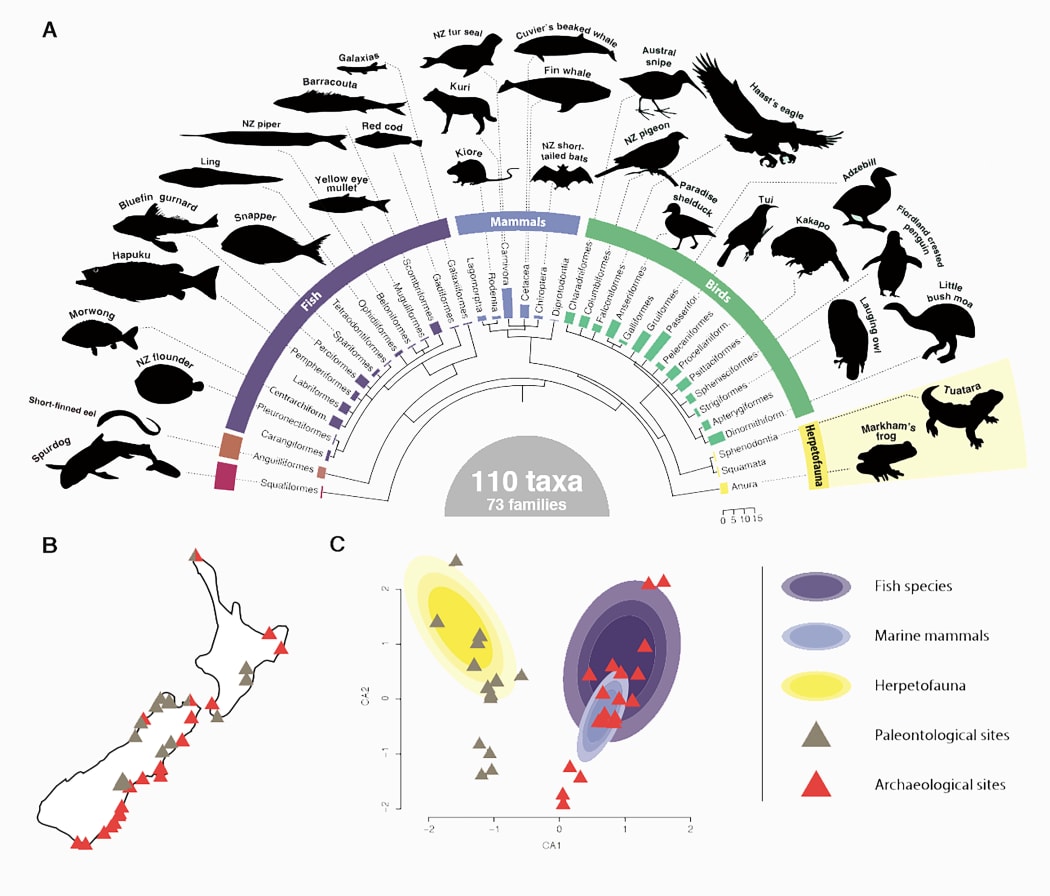
Ancient DNA sourced from bone fragments collected from middens has painted a more detailed picture of early Maori diet. Photo: PNAS
What Māori ate
The study identified more than 100 species, including 14 that are now extinct.
It revealed that early Māori ate at least nine species of marine mammals. New Zealand fur seal, New Zealand sea lion and southern elephant seal were recorded at a number of midden sites, while there were also records of orca, true dolphins, Cuvier’s beaked whale, fin whale and southern right whale.
Richard says Māori were most likely scavenging beached whales, not hunting them.
The ancient DNA technique also revealed species that don’t leave bones, such as sharks, eels and small fish like galaxiids.
Kea and kākāpō were identified for the first time in several middens, although Richard says their presence there is not proof they were eaten. He thinks it is more likely they were killed for their feathers.
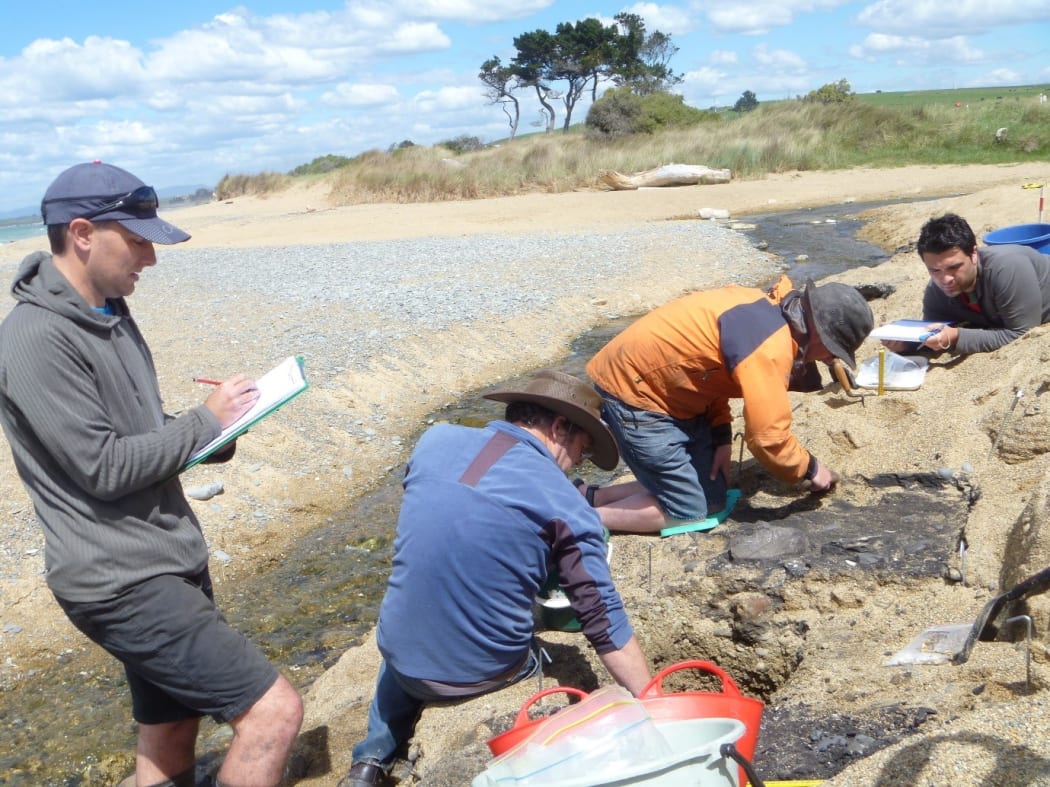
Excavating an early Maori midden on the beach at Awamoa, just south of Oamaru. Photo: Shar Briden, Absolute Archaeology Limited, Dunedin.
Kākāpō diversity
Nic says that the study also took samples from prehistoric fossil sites that predated humans. One interesting finding was the wide range of genetic diversity in kākāpō compared to the present-day population; Nic says they identified ten different genetic lineages, compared to two identified previously. Only one of these lineages is still represented in the current kākāpō population.
He says that this study shows that Māori hunting had a big impact on kākāpō populations. This contrasts with a previous study that put the timing of the decline of the kākāpō population much later, around the time of European settlement and the introduction of stoats to New Zealand in the 1800s.
Find out more
Nic has written about the research for his blog Lost Worlds, Vanished Lives: Fossil lucky dip from a lost world.
The paper Subsistence practices, past biodiversity, and anthropogenic impacts revealed by New Zealand-wide ancient DNA survey by Seersholm et al was published in the journal PNAS.


